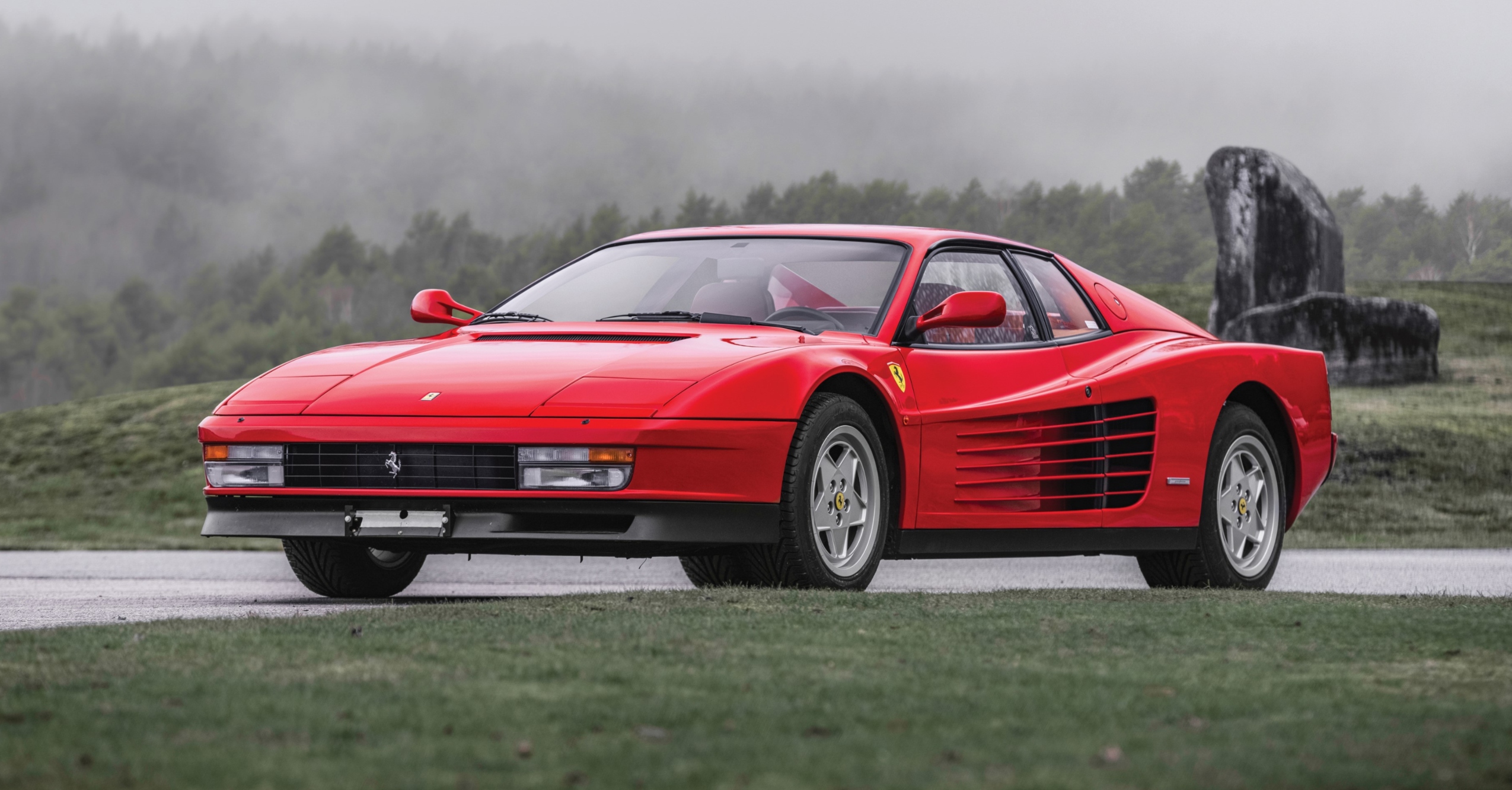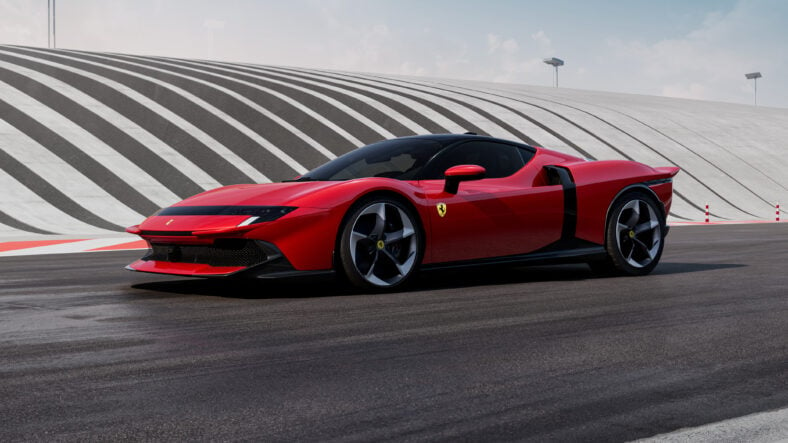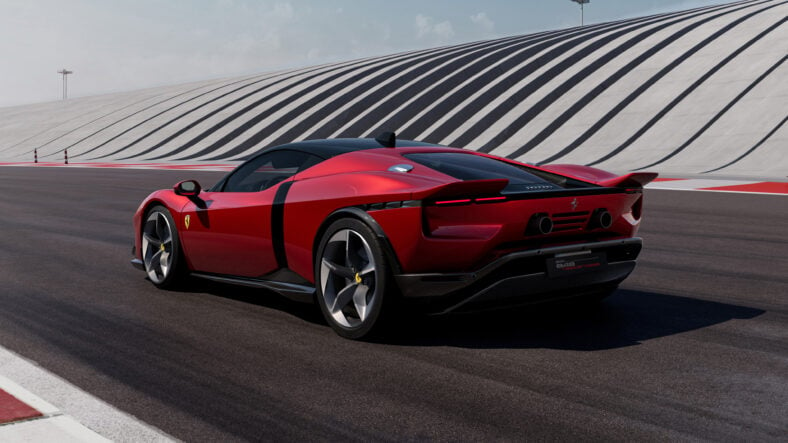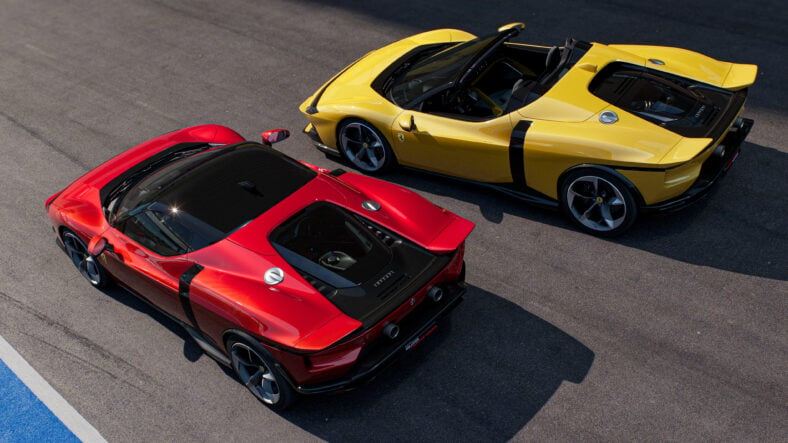
As the new flagship production Ferrari, the 849 Testarossa is automatically one of the most desirable roadgoing vehicles money can buy. But by resurrecting the classic “red head” nameplate, the Maranello marque is also making an instant-classic case for their latest four-wheeled feat of performance engineering.
While Testa Rossa was first used in 1956 to describe the red cam covers on the Ferrari 500 TR’s 2.0-liter four-cylinder—a tradition that carried over to the 3.0-liter V12 cam covers in the succeeding 250 Testa Rossa—the two-word phrase most commonly conjures images of the 1980s bedroom poster icon that stunned the world when it debuted with an avant-garde, wedge-shaped design in 1984.

“The Ferrari Testarossa was a very important model for Ferrari,” Andrea Modena, Head of Ferrari Classiche, the Italian marque’s exclusive department handling official certification, restoration and maintenance of its heritage cars, previously told Maxim.
“The car was of course known for its dramatic styling and the now signature strakes leading to the intakes, but it also featured several important technical innovations, such as the four valves per cylinder, the first time for a twelve-cylinder Ferrari road car. Of course the car subsequently became especially famous as it was included in several important movies and shows”—such as Miami Vice—“especially in the United States, which truly cemented its legacy.”

Much of the Testarossa’s appeal was in its stylized design, one that’s clearly channeled in the 849 Testarossa, particularly by the wedge-shaped front end. At the same time, the OG Testarossa’s side strakes are nowhere to be found, and the bridge-like horizontal fascia connecting the headlights is more aligned with that of the Ferrari 12Cilindri and F80.

Generally, “the vertical and transverse lines generate an unprecedented visual scheme, inspired by aeronautics and the Sports Prototypes of the 1970s,” Ferrari explains, pointing to the dual tails, which have their roots in low-volume 512 S sports prototype from 1970. Additionally, the sculpted upper surface of the door boasts a “three-dimensionality never before achieved on a standard production car,” Ferrari claims. Those tails, which, integrated with the active wing, compose a patented piece of aerodynamic kit.

The Ferrari 849 Testarossa generates approximately 915 lbs of total downforce at 155 mph. This represents a 55-pound increase over the SF90 Stradale. This downforce is achieved through several active aerodynamic elements, including an active rear spoiler. The car’s design and optimized airflow channels contribute to improved cooling, which is 15 percent more efficient its predecessor, the SF90 Stradale, the first hybrid Ferrari.
Aside from the limited-production F80 hypercar, this is the most powerful Ferrari ever. The powertrain is derived from the SF90, however, the V8 gets a redesigned block, cylinder heads and larger turbochargers featuring low-friction bearings, as Road & Track points out. These upgrades have led to a significant jump in combustion-born output to 819 horsepower and 621 pound-feet of torque. Three electric motors—one for each of the front wheels and a third between the V8 and eight-speed dual-clutch transmission—contribute another 216 hp, bringing total horse count to 1,035.

Ferrari claims a 0-62 mph of 2.2 seconds, which exceeds the performance of the SF90 Stradale and its more extreme XX variant, while the top speed pushes past 205 mph. Those figures may suffer slightly in the open-air variant, the 849 Testarossa Spider. Weighing 200 pounds more, the convertible Testarossa 849 features a retractable hard top that can be operated in just 14 seconds at speeds up to 45 km/h (28 mph).
Inside both is a new steering wheel featuring mechanical buttons, including the iconic engine start button. That analog feature is paired with a decidedly modern advanced Human-Machine Interface (HMI) system and extensive ADAS features, like Adaptive Cruise Control and Blind Spot Detection. The interior design aims to optimize space and improve ergonomics, e.g. by reducing the width of the bottom of the door panel and adjacent areas, space is more available for the rear bench and the passenger-side glove box. The seats are available in two versions: comfort, with a sculptural treatment of the upholstery and styling that matches the geometry of the cockpit, and a carbon-fiber racing seat.

For those who crave even more from the most powerful production Ferrari, the optional Assetto Fiorano package is available on both the coupe and the Spider. This track-focused trim sheds about 66 pounds through extensive use of carbon fiber and other lightweight materials, including new carbon fiber wheels and seats. Aerodynamic performance is also ramped up with larger flicks and an additional pair of vortex generators, while stiffer, single-rate Multimatic shock absorbers improve body control and handling on the limit.
Pricing will be announced when deliveries of the Ferrari 849 Testarossa begin in mid-2026, followed by the arrival of the convertible Spider a few months later.















